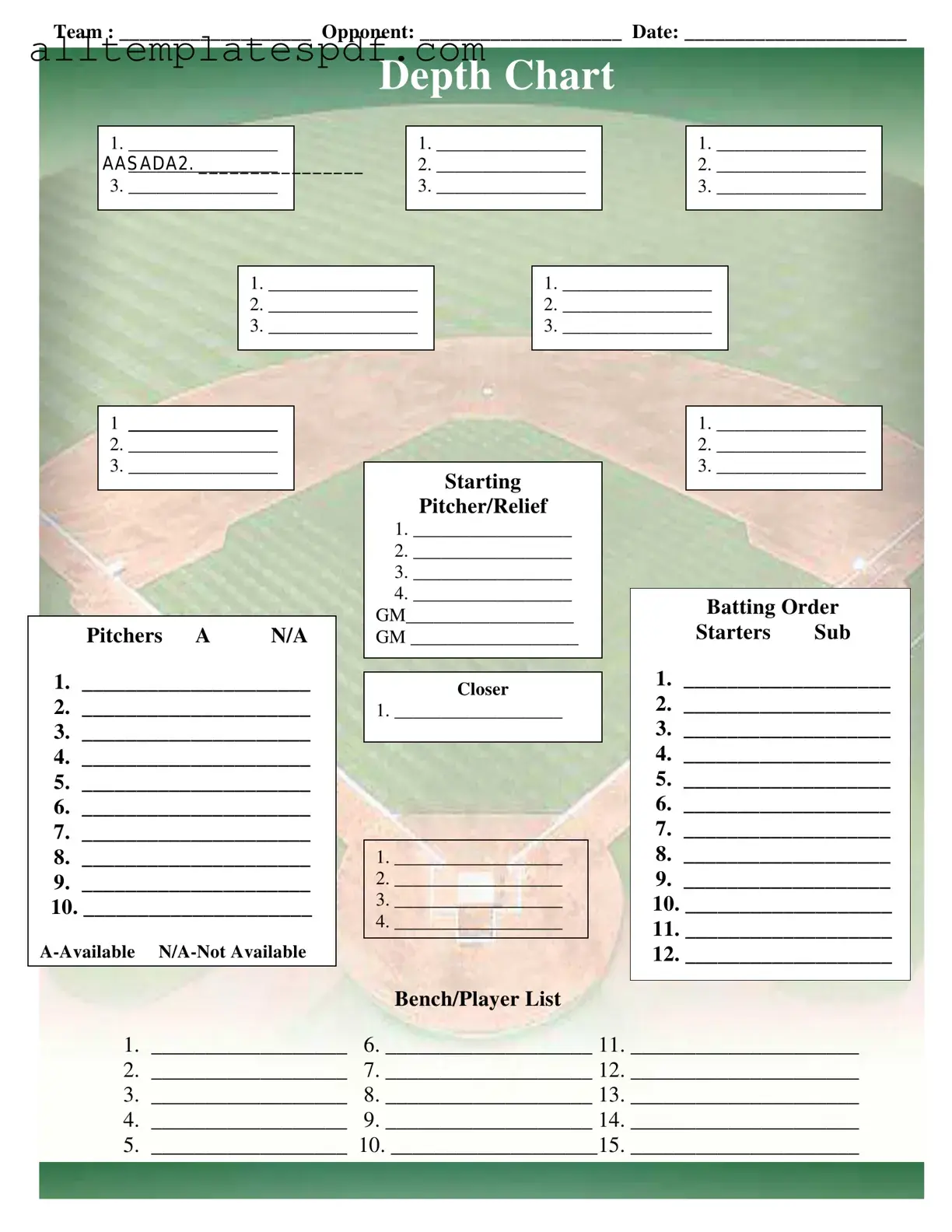Filling out the Baseball Field Lineup form can be straightforward, but mistakes often happen. One common error is leaving the team or opponent names blank. This information is crucial for identification and record-keeping. Without it, the lineup may not be useful.
Another frequent mistake is not including the date of the game. This detail helps in organizing records and ensuring everyone is on the same page about when the game is taking place. Failing to write this down can lead to confusion later.
Some people forget to fill in the depth chart completely. This section is important as it provides a clear view of player availability and positions. Incomplete charts can lead to misunderstandings about who is available to play.
Using nicknames or abbreviations instead of full names is another mistake. Coaches and players may not recognize these names. It’s best to use full names to avoid any mix-ups.
In the pitching section, people sometimes fail to indicate whether a player is a starting pitcher or a relief pitcher. This distinction is vital for game strategy and should be clearly marked.
Another error occurs when the batting order is not filled out correctly. It’s essential to list players in the order they will bat. If this is overlooked, it can disrupt the flow of the game.
People often neglect to fill in the bench/player list completely. This list is important for keeping track of all players involved. An incomplete list can lead to confusion about who is available to substitute during the game.
Sometimes, individuals forget to indicate player availability using the A for available and N/A for not available. This information is necessary for understanding which players can participate in the game.
Another common mistake is not consulting with the entire coaching staff before finalizing the lineup. Each coach may have insights or preferences that can affect the game. Collaboration is key to ensuring the best lineup is presented.
Lastly, failing to double-check the entire form before submission can lead to simple but impactful errors. A quick review can catch mistakes that might otherwise go unnoticed. Taking this extra step can help avoid complications on game day.
